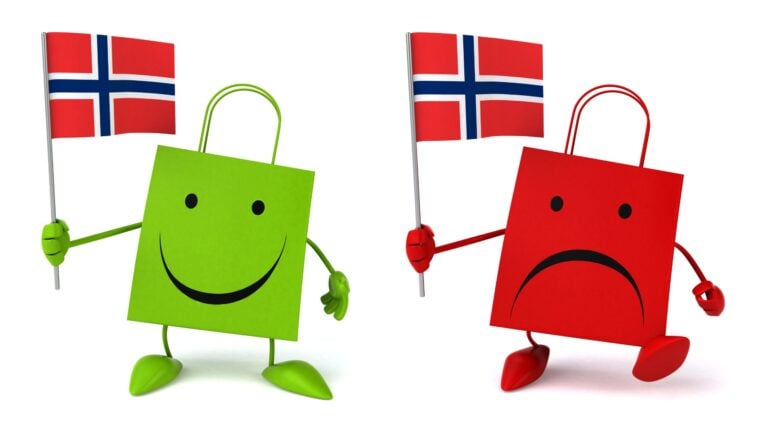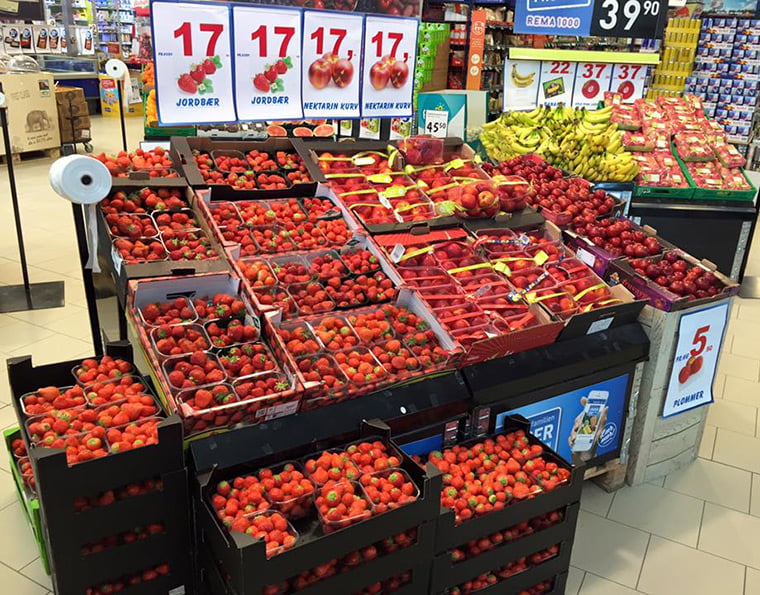A measure intended to reduce plastic bag use by more than two-thirds over the next year has come into force. From now on, a plastic bag in a Norwegian store will likely cost more than four kroner.
In 2022, residents of Norway purchased 722 million plastic bags. On average, that's a surprising 132 bags per person. The number is lower then 2021, but it's not low enough according to authorities.

The goal is for a resident of Norway to buy fewer than 40 plastic bags per year by 2025. To achieve this goal, the fee for a plastic bag from the Norwegian Retailers' Environment Fund will double from 1 to 2 kroner per bag.
More than four kroner per bag
This increase has already been passed on to the consumer in many stores. A single plastic bag now costs at least NOK 4 (USD $0.40) in many stores in Bergen, according to a survey by NRK. Many stores are charging NOK 4.25 (USD $0.42).
Since the last price increase, all major Norwegian supermarkets have experienced a decrease in plastic bag sales. “But it has not decreased enough. That is the starting point for a new increase,” says Norgesgruppen's Kine Søyland to NRK.
Although retailers are staying quiet about how much a plastic bag will now cost, NRK verified there will be a price hike. Søyland said it “will also affect the price in store” while Coop Norway's Knut Lutnæs said a price increase was “not unlikely.”

All expected the new price to lead to a significant reduction in usage. “We expect that the reduction will be significantly greater going forward with the increased fee,” says Lutnæs in Coop.
From the new year, the fee for plastic bags is set to rise even further.
Shopping bags “better”
Norwegian Retailers' Environment Fund CEO Cecilie Lind said that shopping bags have a poor environmental reputation with some, but they are better than many believe.
Read more: A Guide to Shopping in Norway
“An updated assessment has been made,” she said, referring to figures from 2018 that are often quoted by opponents of plastic bag charging.
She said that a shopping bag made from polyester and/or nylon needs to use no more than 8 times before they are better for the environment than a single-use plastic bag that is then used as a trash bag. Although the number for cotton shopping bags is much higher, at 68, according to Lind.


England went from 7.6billion plastic bags in 2014 to 133 million last year, so it’s totally doable to reduce numbers here in Norway too. Apart from price rises, which is probably still the main factor, the narrative/touchpoint flow should change.
I notice in Norway cashiers still ask if you need bags, every single time, and never mention the cost of the bag when offering the purchase, they make it sound like it’s free (granted most people know it comes with a cost, but overlook it).
In the UK, it’s usually the buyer that asks for bags if needed. Quite a few times, especially for smaller purchases, the buyer would not even think about asking for a bag, as they can easily carry things with the hands/pockets, but when asked if they need a bag they might go “ok why not?”.
Overall, I see more plastic in Norwegians supermarkets (do they really need to wrap individual peppers??) than what I see in the UK – at least in recent years.
I was thinking about this recently. We use bags we get from the supermarket (despite us always having reusable ones in the car) as rubbish bins for restavfall (green for food waste and clear for plastics as we live in Nannestad). So they’re ‘reused’ for something else even though plastic isn’t ideal, I wonder what else we could use instead? 132 bags per person is insane though! I might try to keep a tally of how much we use in the next 12 months and see if we use anywhere near that much!
A plastic bag in Norway now costs 4.25 NOK. However, none of this money directly benefits the Norwegian people or the government.
Out of the total cost, 2 NOK goes to the private company Handelens Miljøfond, which distributes funds as it sees fit – a quick search reveals that they often contribute to organizations where they hold positions on the board themselves. There is no oversight on how the funds are utilized, but the general intention is to support organizations working towards environmental improvement. Neither the government nor consumers have any influence over the allocation of these funds.
The remaining 2.25 NOK goes directly into the pockets of store owners, including individuals such as Odd Reitan, Stein Erik Hagen, and others.
In Norway, 80% of plastic bags are utilized as disposal bags. About 18.5% are recycled, with a mere 1.5% ending up in the garbage. There is no available data supporting the claim that a significant number of bags find their way into the ocean or nature.
Interestingly, the reduction of single-use plastic bags has led to a surge in the usage of reusable bags. However, if these bags are made of cotton, they need to be used 7100 times to offset the environmental impact equivalent to that of a plastic bag. The number increases to 20,000 for ecologic cotton and ranges from 35 to 84 for polyester bags.
In essence, the effort to reduce single-use plastic bags has inadvertently resulted in a surge of negative effects on the environment and society.
While plastic bags pose significant problems in other parts of the world, it is crucial to ensure that environmental measures are correct, logical, and positively impact the environment. Initiatives like paper straws and high prices on plastic bags are deemed counterproductive and risk undermining the broader environmental movement.